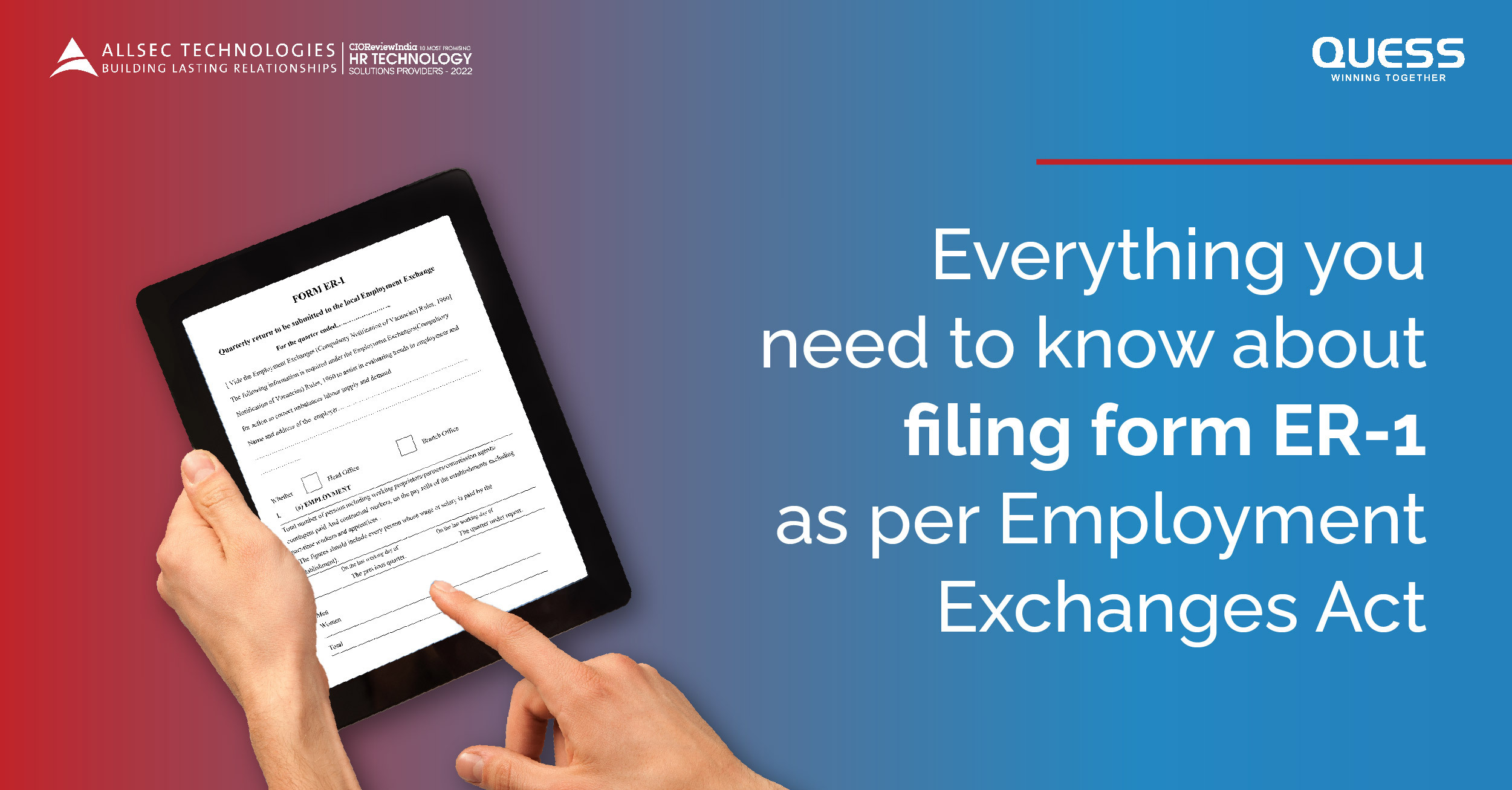
Everything You Need to Know About Filing Form ER-1
In order to monitor the country’s employment numbers and understand the nature of vacancies, the Employment Exchanges (Compulsory Notification of Vacancies) Act of 1959, directs public and private sector establishments to file Form ER-1 to disclose any job vacancies that arise during the course of the year. Filed for every quarter ending 31st March, 30th June, 30th September and 31st December, this form details the total number of employees, the number of male and female employees, the number of vacancies that arose in the year, the number of vacancies that were notified, and the number of vacancies that were filled in a given company.
Do All Organizations Have to File Form ER-1?
The short answer is no. The below mentioned sectors, organizations and roles are exempt from notifying vacancies to the government.
- Organizations with less than 25 employees are exempt from this labour law compliance requirement.
- Businesses that fall under the category of agriculture, horticulture and farm machinery operatives do not have to disclose vacancies.
- Domestic services such as household help also do not fall under the purview of this act.
- If the vacancy is open for less than three months, then employers do not have to disclose the same.
- Unskilled office work jobs are exempt from filing Form ER-1.
- Roles in the Parliament do not have to be disclosed or publicized as per this labour compliance requirement.
- If the company proposes to fill the vacancy internally through promotions or transfers, then they do not have to be divulged.
- If the remuneration for the role is less than Rs. 60 a month, the job does not have to be declared through Form ER-1 filing.
How Do You File Form ER-1?
The requirements and information to be filled in Form ER-1 varies between states. Some allow online filing while others require manual filing. States such as Karnataka, Maharashtra, Haryana, and Uttar Pradesh have enabled online filing of the Quarterly Return.
Manual Filing Process
To file Form ER-1 manually, you need to collect it from the Local Employment Exchange. You can also download the form from the official website or from the rulebook. Then, fill up the details, place the company seal and send it back to the Exchange via Registered Post with Acknowledgement Due (RPAD).
The online process depends on the state’s web page. You will need to create a User Login ID and then fill in the required information. After the profile has been created, the Employment Exchange Department will approve the same and enable the ER-1 Return filing provision. If you want to change the registered email ID or phone number, you will have to do it manually at your local Employment Exchange.
At Allsec, our team undertakes this process for our clients who have opted for our statutory compliance services.
What Happens If You Don’t File Form ER-1?
Unless an organization is exempted under the law, failure to file the form will attract a fine of Rs. 500 for the first negligence and Rs. 1,000 for every subsequent non-compliance.
That is everything you need to know about form ER-1 in a nutshell. Still have questions? Get in touch. We are more than happy to answer any questions.


